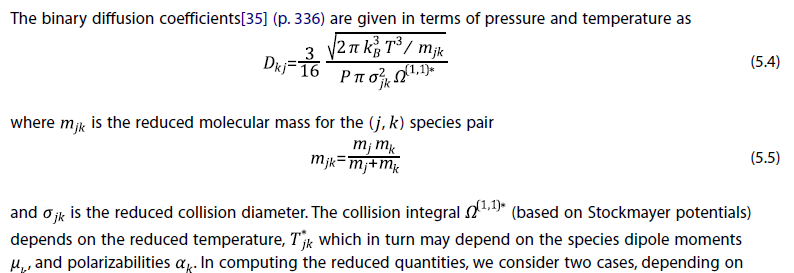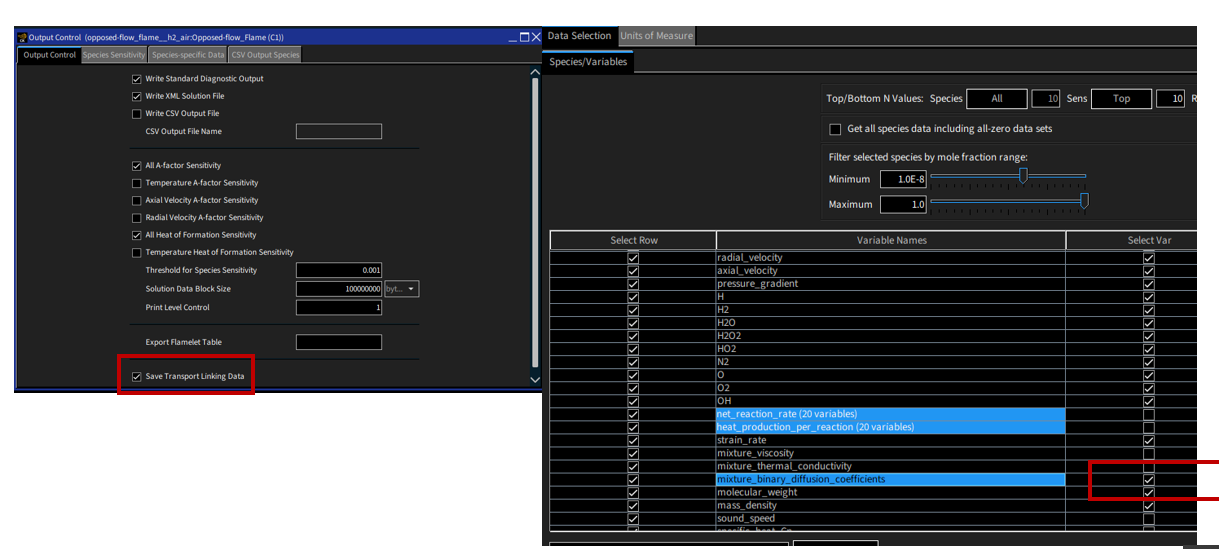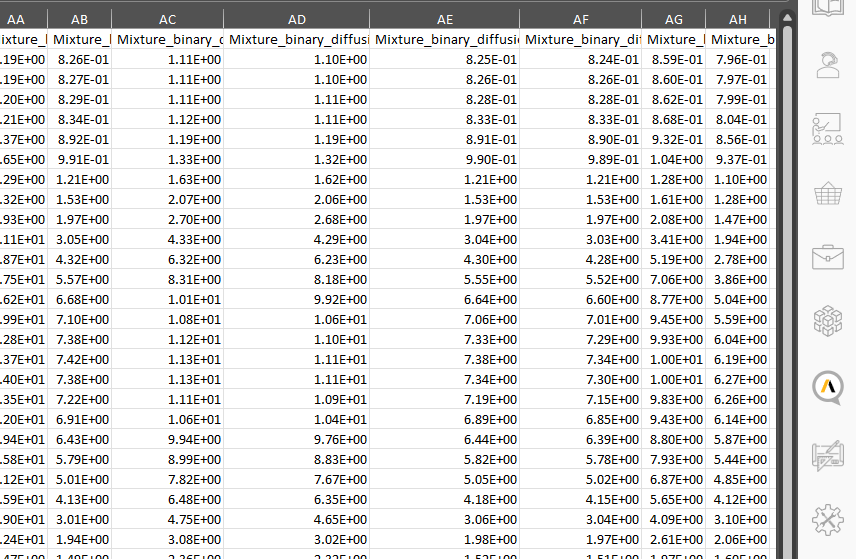TAGGED: ansys-chemkin, chemkin, species-transport
-
-
January 2, 2025 at 11:15 pm
djr6248
SubscriberHello,
I need help determining why my opposed flow simulations are not producing real mixture binary diffusion coefficients. I am receiving the INF mixture binary diffusion coefficient across the whole domain in the Ansys output file.
Initially, I ran opposed flow flame (OFB) simulations with formaldehyde and air in inlets one and two, respectively. The velocity of the gas flows is relatively low, which should allow for diffusion of the species across a significant portion of the control volume. I initially used a mixture averaged diffusion coefficient approach, and I received infinite diffusion coefficients for all my gasses but still produced a solution. I then switched to a multi-component mixture and still had the same issue. I increased my max grid points to 1000 across 0.43 CM domain length. I still did not get real values for the diffusion coefficients. I then went to the Ansys-provided OFB simulation example with hydrogen and air. I repeated the same process and still received "INF" diffusion coefficients.
From the theory manual, the binary diffusion coefficients is written as follows:
I checked the Transport file, and it appears to have the reduced collision diameter defined, but I am unsure how to check if it is appropriately calculating the (1,1) collision integral.
Has anyone come across this issue before? If so, do you know what the problem is? If not, do you know what could be causing Chemkin to output INF diffusion coefficients?
-
January 7, 2025 at 3:43 pm
jcooper
Ansys EmployeeHi : This is the first I have heard of this issue. Can you please attach your Chemkin project archive for review?
Thanks,
Judy
-
January 7, 2025 at 5:21 pm
djr6248
SubscriberHello Judy,
I do not see anywhere which I can attach a file beside an umage. I used the link share button instead. https://drive.google.com/file/d/1TeS3zPJV-Xm1sNWPYZR8dSetcDmPe4E9/view?usp=drive_link
To keep things simple, the archive file utilizes the opposed-flow_flame__h2_air example that is shipped with ANSYS Chemkin 2023 R2. I have modified the input file to utilize muticompnent diffusion, print level 3 and save transport properties. I have tried viewing the output file in the native Chemkin viewer as well as the Excel output with neither reporting actual values for diffusion coeffiecnts. What I get is:
Mixture_binary_diffusion_coefficients_H2_(cm2/sec) Mixture_binary_diffusion_coefficients_H_(cm2/sec) Mixture_binary_diffusion_coefficients_O2_(cm2/sec) inf inf inf Hopefully I am missing something simple!
Thank you!
-
-
January 7, 2025 at 10:00 pm
jcooper
Ansys EmployeeHi:
Let me run some tests with the Chemkin-supplied files and get back to you.
Thanks,
Judy
-
January 13, 2025 at 1:49 pm
djr6248
SubscriberHello Judy,
I just wanted to follow up to see if there have been any developments regarding this issue.
Thank you!
David Ramirez
-
-
January 13, 2025 at 4:46 pm
jcooper
Ansys EmployeeHI David:
Sorry for the delay. I tried this with the out-of-the-box opposed-flow_flame__h2_air case and was able to plot the diffusion coefficients as a function of mixture fraction by doing the following:
- Select Transport linking Data in Output control
- Ensure that Mixture binary diffusion coefficients are selected variables
Here is my output
They are also non-zero in the Excel output:
Best Regards,
Judy
-
January 13, 2025 at 7:26 pm
djr6248
SubscriberHello Judy,
I believe I have found the cause of the issue. I think the problem is version-dependent. I was able to get the Binary Diffusion Coefficients in Ansys Chemkin 2024 R2, but I WAS NOT able to get them in Ansys Chemkin 2023R2. I tried another computer with Ansys 2023 R2 to see if it was an install issue, but even that computer has issues with populating diffusion coefficients. Are there any patch notes that state whether this was an issue with 2023 R2?
-
January 13, 2025 at 11:08 pm
jcooper
Ansys EmployeeHi David:
I didn't find anything in our Bug reports, but issue may have been corrected by other work in 2024.
Best Regards,
Judy
-
- You must be logged in to reply to this topic.



-
3467
-
1057
-
1051
-
929
-
896

© 2025 Copyright ANSYS, Inc. All rights reserved.











